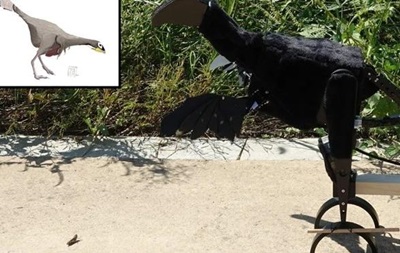
The results may provide convincing evidence of how the feathery feathers on protowings and tails were used by dinosaurs and why they evolved in animals at all.
Researchers have created a special dinosaur robot to understand how this species used its protowings. This is reported by IFLScience.
“Many miniature non-avian dinosaurs are known to have had wings, but only one group, called Pennaraptora, had feathers. These feathers were present on their protowings (primitive wings too tiny to be used for flight) and tails, often colored in a contrasting pattern. The function of protowings in dinosaurs is still a matter of debate among researchers, and the authors of the study believe that the display of feathers could have been used during hunting to lure prey out of hiding,” the scientists say.
Pennaraptora are known to have been insectivorous and omnivorous, and to have used intimidation tactics to lure prey out of hiding. This behavior is still observed in some birds that are still alive today, such as the California ground cuckoo (Geococcyx Californianus) and the many-voiced mockingbird (Mimus Polyglottos).
The prototype of the robotic dinosaur was the Pennaraptor dinosaur Caudipteryx, which lived on Earth about 124 million years ago. Paleontologists suggest that its size is comparable to that of a peacock.
“The results of the study show that 93% of the tested grasshoppers fled when the robot used the protowings, and only 47% of the insects fled when the wings were not used by the robot. There was also a significant relationship between white spots on the wings and tail feathers and the likelihood of the grasshoppers escaping,” the report says.
Earlier, archaeologists found the remains of a four-meter tall creature. It is assumed that it could have been Bigfoot.

